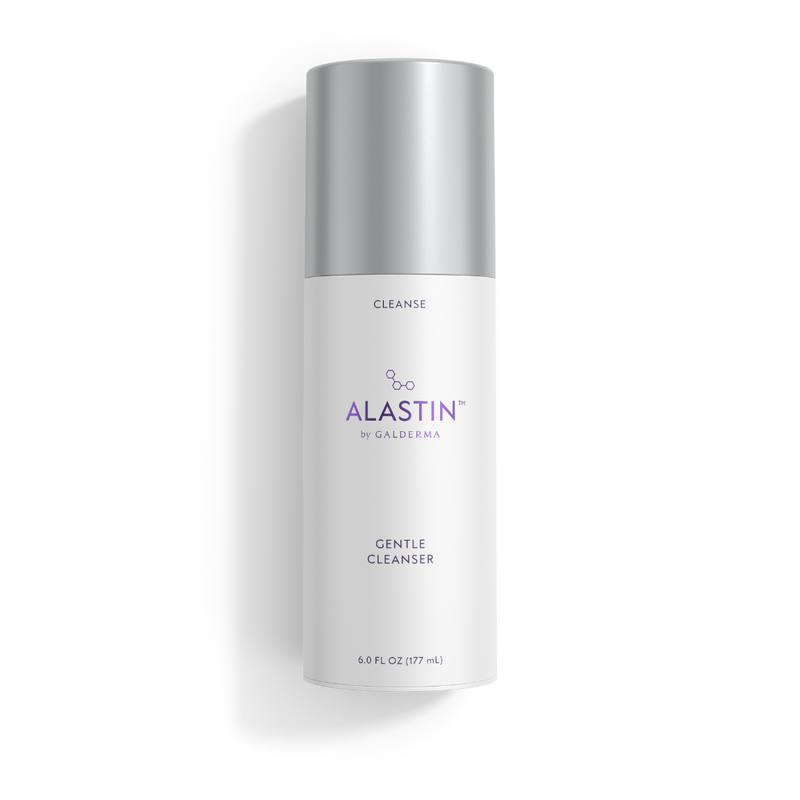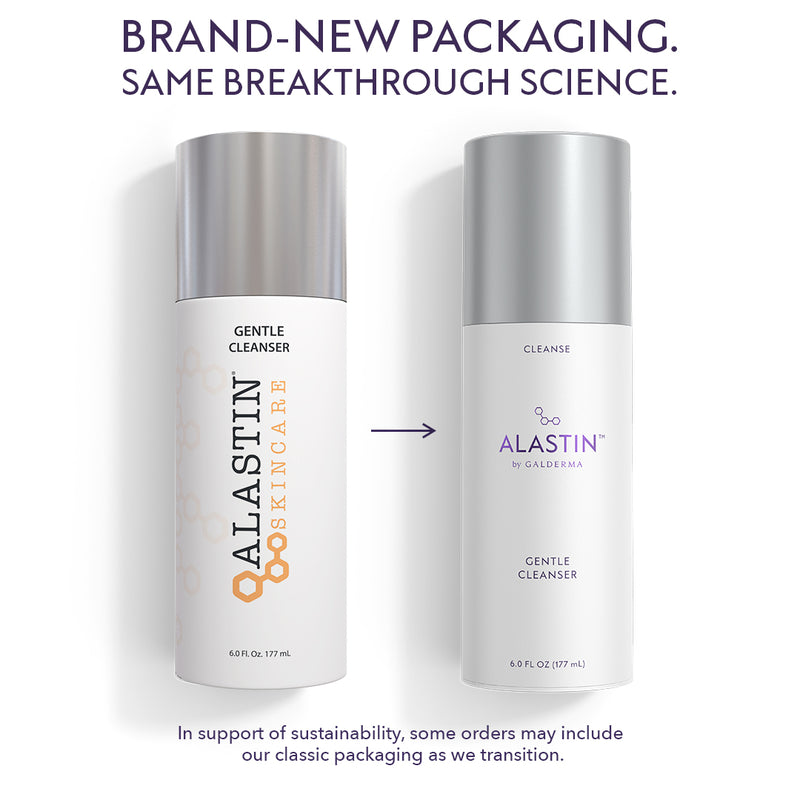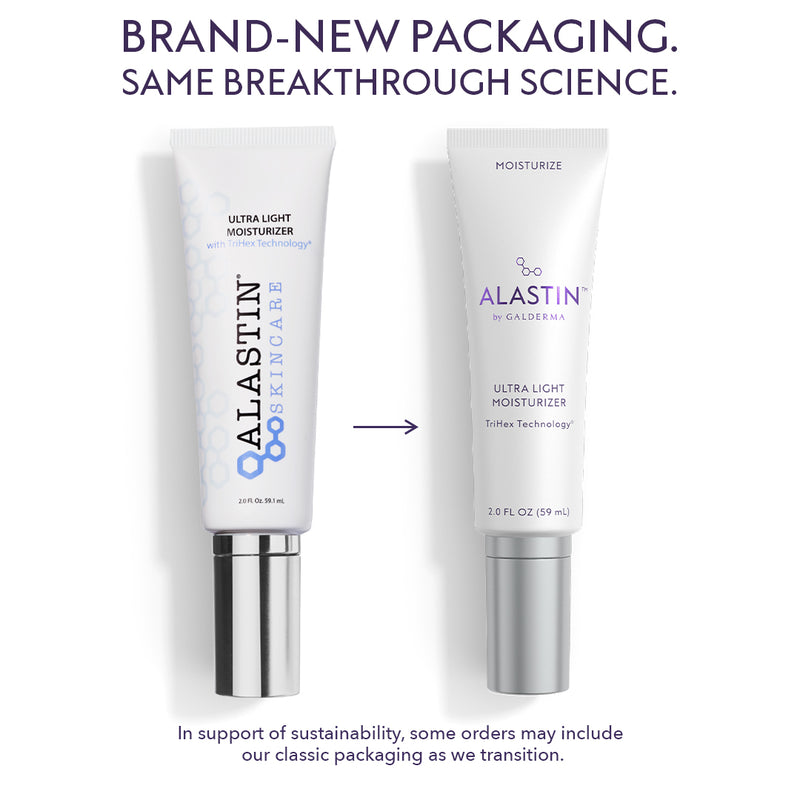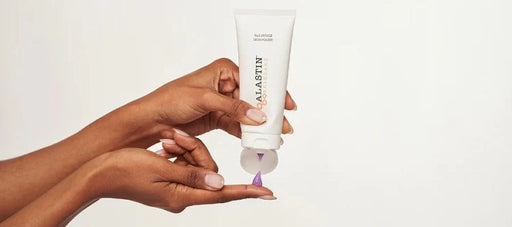You have no items in your bag
Microdermabrasion vs. Microneedling
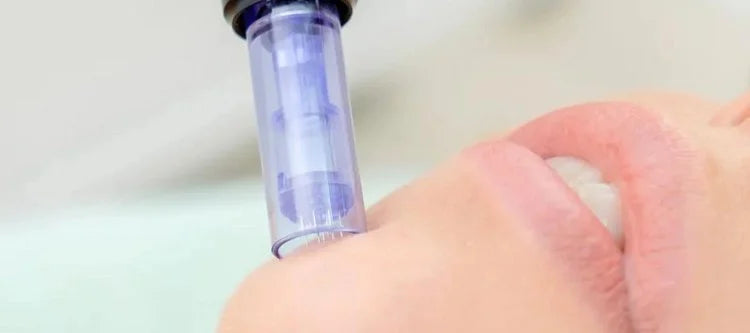
If you’re considering microdermabrasion vs microneedling it’s important to educate yourself on the differences so that you can uncover which is best for your skin.
What is Microdermabrasion?
Microdermabrasion is a gently abrasive exfoliation procedure that removes the topmost layer of the skin. This is done with a device that sprays aluminium oxide crystals from a tube onto the skin’s surface while also using suction to remove dead skin cells.1
It’s like gently and painlessly polishing your face.
By removing the dead or damaged top layer of the skin, you reveal skin underneath that is usually smoother in texture. Also, microdermabrasion has been shown to introduce the growth of new collagen and elastin, which can help promote more youthful skin. All in all, the procedure can take 30 to 60 minutes.
Microdermabrasion is non-invasive, which means there is virtually no downtime. You may experience some redness and slight swelling (similar to a sunburn) for a day or two, but for the most part you should be able to moisturize, use sunscreen, and carry on as normal.2
What Does Microdermabrasion Treat?
Microdermabrasion is used to treat these skin concerns3:
- Dull complexion
- Acne scars
- Uneven skin tone or texture
- Age spots
- Melasma
Microdermabrasion Cost
The average cost of microdermabrasion is $136 per session according to 2019 data from the American Society of Plastic Surgeons.4
What is Microneedling?
Microneedling is a procedure with minimum invasion that uses tiny needles (between .5 and 2.5 millimeters in diameter) to press into the top layers of your skin.
Microneedling is also known as "skin needling" and "percutaneous collagen induction therapy" because of its ability to prompt the skin to produce new collagen, and
The purpose of microneedling is to create micro-injuries in the skin, which stimulates the skin to repair itself. The new collagen produced during this repair contributes to youthful, elastic skin.5 Typically, the procedure takes about 30 minutes.
Microneedling aftercare should require very little downtime, if any at all. You may bleed directly after treatment but that shouldn’t last longer than 2 minutes.6 You may experience irritation and redness for a few days, which you can cover with makeup as soon as a day after the procedure.
What Does Microneedling Treat?
Microneedling has mostly been studied for treating skin concerns that cause irregular texture or depressions in the skin. These include:
- Acne scarring
- Burns
- Large pores
- Wrinkles
- Stretch marks
Microneedling may also be used to help topical treatments penetrate the skin, which makes these treatments more effective. This method has been studied with7:
- Alopecia
- Melasma
Microneedling Cost
The cost of microneedling depends on the size of the area being worked on. A session can range from $200 to $700.8
Benefits of Microneedling
Not only does microneedling stimulate the skin to produce collagen, but it also reduces the size of pores and boosts blood supply which in turn improves the texture, firmness, and hydration of your skin.
Microneedling can reverse the effects of sun damage, reduce the appearance of aging skin by tackling fine lines and wrinkles, improve the appearance of stretch marks, acne scars, and hyperpigmentation.17
Microdermabrasion vs Microneedling
There are important differences between microdermabrasion and microneedling that can help you decide which is right for you.
Effects on the Skin
A key difference between microdermabrasion and microneedling is the effect each has on the skin’s surface. Both affect the epidermis—the skin’s top layer—but microdermabrasion removes a bit of the epidermis (the stratum corneum)9 while microneedling keeps the epidermis intact.
The Stratum Corneum is the skin's first line of defense against the outside world. In a journal article discussing microneedling, plastic surgeon Des Fernandes expresses concern about removing the epidermis. He asks, “Why destroy the epidermis to make skin smoother?”10
This doesn’t mean that microdermabrasion doesn’t serve a function, though. If you’re dealing with stubborn surface-level complexion issues—chronically rough skin, persistent melasma, dull complexion—a new layer of skin may be just what you need.
Which is the Best for You?
From a glance, it seems that the differences between microdermabrasion and microneedling aren’t very big. They both promote the renewal of collagen by doing some kind of controlled “injury” to the skin.
However, your specific skin concerns actually play a big role in the outcome of these procedures. For some skin types it’s a toss-up, but for others, one procedure is the clear choice.
Oily/Acne Prone Skin
If you have active, inflamed acne, neither treatment is ideal because of the risk of scarring.
If you have oily type skin and large pores are a concern, microneedling is the only one of these treatments that goes deep enough into the epidermis to affect the appearance of pores.
Sensitive Skin
Microneedling probably isn’t best for sensitive skin because the needles may actually cause pain. Microdermabrasion is the gentler option.
Dry Skin
Neither microdermabrasion or microneedling seem to pose a significant threat to dry skin, but if you are choosing between the two, microdermabrasion seems to be the better option. Dry skin could be a result of a damaged skin barrier.11 Microdermabrasion can help rebuild your skin barrier.
Darker Skin
For people with darker skin, some procedures that penetrate the epidermis (i.e. deep chemical peels and laser resurfacing) are not recommended because of the risk of hyperpigmentation. However, studies show that microneedling is safe for darker skin.12
Superficial Discoloration and Light Texture
Microdermabrasion is best for surface level discoloration and light texture issues.
The acne scar you got after popping a pimple or the slight spot on your cheek you wish was just a little bit brighter are the kind of issues that microdermabrasion handles best.
Deep Discoloration and Texture
As for stretch marks, deep wrinkles, sun spots, you may want to treat your skin more deeply with microneedling.
Which is More Effective?
You’ve heard this a thousand times before, but Rome really wasn’t built in a day. Celebrity skin takes time (but you can certainly get there).
This means that whichever treatment you choose, you’re looking at several sessions of treatment to get your desired results.
For microdermabrasion, most patients receive between 5 and 16 treatments.13
For microneedling, most patients require 3 to 6 treatments every 2 to 6 weeks.14 Results can be immediate for some patients; however, as your skin repairs itself naturally over the weeks following your skincare procedure, you will notice more collagen and elastin growth leading to healthier looking skin. Some patients won't see the final result until up to 3 to 6 months following the last session.
So, while microneedling is more costly, you may be getting more bang for your buck because you will likely require fewer treatments.
How Often Should You Get Treated?
Most patients can safely get another microdermabrasion treatment after one week, but if you are still tender, dry, or red several weeks later, take that as a sign that you are still recovering and shouldn’t jump into any other treatments just yet.15
As for the microneedling treatment, a wait time of two to six weeks is recommended. Of course, listen to your skin and your dermatologist to be sure.
Do Dermatologists Recommend Microneedling?
These days, dermatologists have many methods of treating various skin concerns and microneedling is certainly one of them. If your dermatologist believes you are a good candidate for microneedling, it is generally considered to be a safe practice.16
Either Way, Enhance Your Skincare Routine
If you’re considering either of these procedures, make sure to practice good skincare before and after your sessions. A baseline skincare routine includes:
However, the results of a microdermabrasion or microneedling treatment can be enhanced with skincare that strengthens your skin and promotes healing. Our Regenerating Skin Nectar is formulated to be used one to two weeks before and until the skin is healed post-procedure. Once healed, transition to Restorative Skin Complex to maintain healthy skin.
Sources:
- American Society for Dermatologic Surgery. Skin Experts, www.asds.net/portals/0/PDF/secure/skin-experts-chemical-peel-color.pdf
- "Microdermabrasion: FAQs." American Academy of Dermatology, www.aad.org/public/cosmetic/age-spots-marks/microdermabrasion-faqs
- "Microdermabrasion: Overview." American Academy of Dermatology, www.aad.org/public/cosmetic/age-spots-marks/microdermabrasion-overview
- "Microdermabrasion Cost." American Society of Plastic Surgeons, www.plasticsurgery.org/cosmetic-procedures/microdermabrasion/cost
- "Microneedling." Yale Medicine, 2 Dec. 2019, www.yalemedicine.org/conditions/microneedling
- Fernandes, Des. "Percutaneous Collagen Induction: An Alternative to Laser Resurfacing." OUP Academic, 1 May 2002, academic.oup.com/asj/article/22/3/307/183844
- "Microneedling." Yale Medicine, 2 Dec. 2019, www.yalemedicine.org/conditions/microneedling
- Cherney, Kristeen. "Microneedling Cost by Type and Body Part, Versus Laser, and More." Healthline, 25 June 2018, www.healthline.com/health/beauty-skin-care/microneedling-cost
- El-Domyati, Moetaz, et al. "Microdermabrasion: a Clinical, Histometric, and Histopathologic Study." Wiley Online Library, 29 June 2016, onlinelibrary.wiley.com/doi/full/10.1111/jocd.12252
- Fernandes, Des. "Percutaneous Collagen Induction: An Alternative to Laser Resurfacing." OUP Academic, 1 May 2002, academic.oup.com/asj/article/22/3/307/183844
- Stanborough, Rebecca J. "Skin Barrier Function and How to Repair and Care for It." Healthline, 16 Sept. 2020, www.healthline.com/health/skin-barrier#signs-of-damage
- Singh, Aashim, and Savita Yadav. "Microneedling: Advances and Widening Horizons Singh A, Yadav S - Indian Dermatol Online J." Indian Dermatology Online Journal : Free Full Text Articles from Indian Dermatol Online J, 1 July 2016, www.idoj.in/article.asp?issn=2229-5178;year=2016;volume=7;issue=4;spage=244;epage=254;aulast=Singh
- "Microdermabrasion: FAQs." American Academy of Dermatology, www.aad.org/public/cosmetic/age-spots-marks/microdermabrasion-faqs
- "Acne Scars: Diagnosis and Treatment." American Academy of Dermatology, www.aad.org/public/diseases/acne/derm-treat/scars/treatment#treatment
- "Microdermabrasion: FAQs." American Academy of Dermatology, www.aad.org/public/cosmetic/age-spots-marks/microdermabrasion-faqs
- "Acne Scars: Diagnosis and Treatment." American Academy of Dermatology, www.aad.org/public/diseases/acne/derm-treat/scars/treatment#treatment
- Iriarte, C., Awosika, O., Rengifo-Pardo, M., & Ehrlich, A. (2017, August 08). Review of applications of microneedling in dermatology. Retrieved from https://www.ncbi.nlm.nih.gov/pmc/articles/PMC5556180/
$258.00
$98.00


